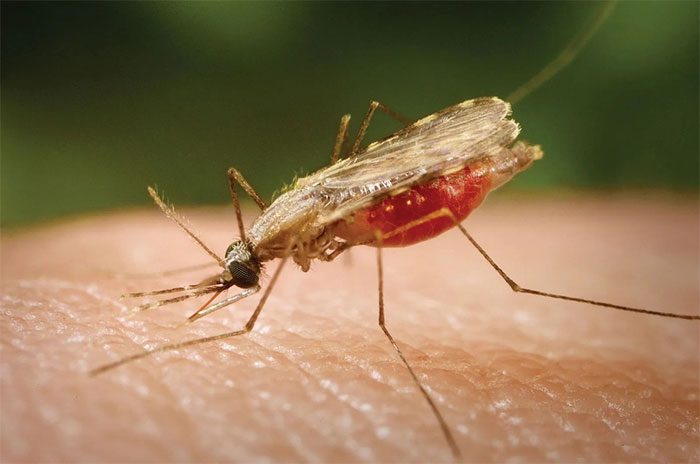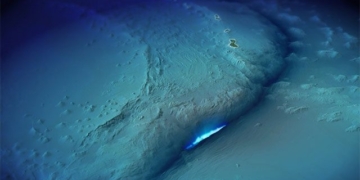According to The New York Times, scientists have noted a significant increase in the range of disease-carrying mosquitoes over the past century as global temperatures rise.
The warming temperatures are pushing many animal and plant species into new habitats, sometimes resulting in devastating consequences for ecosystems. However, there is little evidence regarding how far and how quickly these species can move.
A recent study has provided insights into the future by looking back at the past. According to the study, malaria-carrying mosquitoes in the African Sahel have moved to higher altitudes at a rate of about 6.5 meters per year and have shifted away from the equator at a rate of 4.7 kilometers per year over the past century.

Malaria mosquitoes are increasingly appearing in Africa. (Photo: Britannica).
Climate Change Expands the Impact of Disease
The authors of the study indicate that the movement rate of malaria-carrying mosquitoes aligns with climate change and may explain why the range of malaria has expanded over recent decades. Furthermore, this trend has significant implications for countries that are not well-prepared to combat malaria.
“Most research on the impacts of climate change on health tends to focus on the spread of diseases. This makes it difficult to pinpoint any single cause and only provides predictive value. Instead, the new study offers a retrospective look at how mosquitoes are moving,” said Colin Carlson, a biologist at the Center for Global Health Science and Security at Georgetown University and the lead author of the study.
Dr. Sadie Ryan, a medical geographer at the University of Florida, noted that this research corresponds with the locations and methods of malaria transmission. The rate of movement of malaria-carrying mosquitoes will help experts assess the severity of the impact of climate change on infectious diseases.
Not only mosquitoes, but as the planet warms, plants and animals, particularly invertebrates, are also beginning to seek cooler environments by moving to higher altitudes or migrating closer to the poles. A meta-analysis estimates that, so far, terrestrial species have moved uphill at a rate of 1.1 meters per year and towards the poles at a rate of 1.7 kilometers per year.
For example, Lyme disease-carrying ticks are significantly expanding their range in the northern United States. Bats are also relocating, spreading infectious diseases like rabies everywhere. In the Northeast, lobsters are dying from a fungus related to global warming.

High fever is a typical symptom of malaria. (Photo: Nzherald).
The “Invasion” of Malaria-Causing Mosquitoes
Dr. Morgan Tingley, an ecologist at the University of California, Los Angeles stated: “We often underestimate the impact of climate change because the world is generally warming. While species have redistributed across the planet for millions of years to adapt to climate, the current changes are happening at an extremely rapid pace. This will not bode well for many species and will create instability in ecosystems.”
Specifically, in Hawaii, the “invasion” of a new mosquito species has caused avian malaria, threatening two native bird species, ‘akeke’e and ‘akikiki. Currently, the populations of these two species are at alarming levels, with only 1,000 ‘akeke’ and 50 ‘akikiki’ remaining. Dr. Tingley reported that the number of ‘akikiki has been declining rapidly in recent years and is projected to go extinct within this decade.
Dr. Tingley and other researchers emphasize the importance of collecting data to accurately understand how and at what speed mosquitoes, along with other disease carriers, are moving across the globe.
It is expected that warming climates will favor mosquitoes, as it accelerates their reproduction rates. At the same time, the parasites that mosquitoes carry will thrive in higher temperature conditions.
Mr. Carlson and his colleagues relied on a massive database published in 2017, which recorded the distribution of 22 mosquito species in the African Sahel from 1898 to 2016. The dataset extracted information from entomological surveys, peer-reviewed publications, technical reports, dissertations, and archival records.
Specifically, the study indicated that between 1898 and 2016, various Anopheles mosquito species expanded their range by an average accumulated elevation of 701.04 meters and over 482.8 kilometers southward from the equator.
Dr. Tingley expressed full confidence in the trends reported in the study but cautioned against placing too much emphasis on the rate of movement. Part of this caution stems from the possibility that the study may be underestimating the changes by not accounting for the increasingly rapid global warming in recent years.
Experts suggest that some of the movement of mosquitoes may also stem from changes in land use, the availability of food sources, or the side effects of people migrating to higher grounds due to climate change. However, disease-carrying mosquitoes pose a serious threat to regions where populations and organizations are not well-prepared.


















































